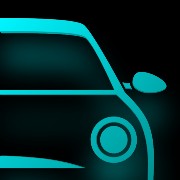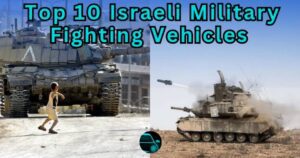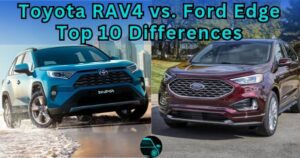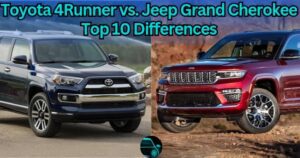Iran’s military development, particularly in the domain of fighting vehicles, has been an area of significant attention in recent decades. Since the 1979 Islamic Revolution, Iran has made substantial efforts to develop indigenous military hardware, with a particular focus on producing advanced fighting vehicles. These vehicles are designed for a range of purposes, from defending Iran’s vast borders to supporting its regional military influence.
In this article, we’ll take a deep dive into the top 10 Iranian military fighting vehicles, analyzing their capabilities, technological advancements, and how they contribute to Iran’s overall military strategy. Whether you’re a military enthusiast or an expert, this overview will provide detailed insights into the evolution of Iran’s fighting vehicles.
Top 10 Iranian Military Fighting Vehicles
1. Zulfiqar Main Battle Tank

The Zulfiqar tank is a homegrown Iranian fighting vehicle that stands as the backbone of Iran’s armored forces. Named after the sword of Imam Ali, an important figure in Islamic history, the Zulfiqar was first unveiled in the 1990s. It features a 125 mm smoothbore cannon, and its design is based on a combination of components from Soviet and Western tanks, specifically the M60 Patton and T-72.
Iran’s defense industry has worked tirelessly to improve this fighting vehicle with multiple versions released over the years, most notably the Zulfiqar-3. The latest model boasts enhanced armor protection, modern fire control systems, and improved mobility.
2. Karrar Main Battle Tank

The Karrar MBT (Main Battle Tank) is one of Iran’s latest military fighting vehicles. It was introduced in 2017 and has been hailed by Iranian military officials as a tank comparable to modern Russian and Western designs. Equipped with advanced fire control systems and electro-optical systems for targeting, the Karrar is an indigenous production that marks a significant leap in Iran’s tank development capabilities.
The Karrar features composite armor and ERA (Explosive Reactive Armor), making it highly resistant to anti-tank weapons. It also carries a 125 mm smoothbore gun, capable of firing guided missiles. In terms of Iran’s fighting vehicles, the Karrar is seen as a major asset in bolstering the country’s armored forces.
3. Sayyad Armored Personnel Carrier (APC)

The Sayyad APC is an amphibious Iranian fighting vehicle designed for the rapid transport of troops in a variety of terrains. As an armored personnel carrier, the Sayyad provides protection against small arms fire and shell fragments, and it’s capable of carrying up to 10 infantrymen.
Iran’s focus on producing versatile military fighting vehicles is well-reflected in the Sayyad APC. It offers both land and sea mobility, which is crucial for Iran’s military, given the diverse geographical landscape ranging from deserts to coastlines. This vehicle has been a critical part of Iran’s military operations, especially in regional conflicts where mobility and protection are essential.
4. Boragh Infantry Fighting Vehicle

The Boragh is another vital component of Iran’s mechanized infantry units. Based on the Soviet BMP-1 design, the Boragh has been significantly modified to meet Iran’s specific military needs. It serves as both an infantry fighting vehicle (IFV) and an APC.
Armed with a 30 mm autocannon, anti-tank guided missiles, and machine guns, the Boragh offers potent firepower along with the ability to transport troops. Its amphibious capabilities allow it to cross water obstacles, which gives it a distinct advantage in Iran’s military operations. As a multi-role Iranian fighting vehicle, the Boragh plays an integral part in the nation’s defense strategy.
5. Rakhsh Armored Personnel Carrier

Named after a legendary horse in Persian mythology, the Rakhsh APC is another prominent fighting vehicle in Iran’s arsenal. The Rakhsh is designed for troop transport in combat zones and is equipped with a turret-mounted machine gun, providing defensive firepower against infantry and light vehicles.
The Rakhsh APC is a product of Iran’s Defense Industries Organization and can carry up to 10 troops. Its armored protection, off-road capabilities, and reliable performance have made it a crucial asset in both conventional warfare and peacekeeping missions.
6. Shaheen Armored Vehicle

The Shaheen armored vehicle is a mine-resistant ambush-protected (MRAP) vehicle developed by Iran to protect troops against IEDs (Improvised Explosive Devices) and landmines. The Shaheen provides high levels of protection, with its V-shaped hull design effectively deflecting blasts away from the vehicle’s crew and passengers.
In recent years, the importance of MRAPs has grown as Iran’s military has faced asymmetric warfare, especially in regions such as Iraq and Syria. The Shaheen is a reflection of Iran’s understanding of modern warfare’s evolving threats and its commitment to producing military fighting vehicles that can handle these challenges.
7. Tosan Light Tank

The Tosan light tank is designed for rapid deployment and high mobility in rugged terrains. It’s much smaller than conventional tanks, making it an agile and versatile addition to Iran’s armored forces. This Iranian fighting vehicle is equipped with a 90 mm gun, which is effective against both light armor and fortified positions.
The Tosan’s lightweight design allows it to traverse difficult landscapes, particularly the mountainous regions of Iran, where conventional heavy tanks may struggle. It plays a specialized role in Iran’s military, offering support in areas where larger fighting vehicles are less practical.
8. Cobra Helicopter Gunship

While not a ground-based fighting vehicle, the Cobra helicopter plays a critical role in Iran’s armored and mechanized operations. Iran has significantly upgraded its fleet of Cobra helicopters since acquiring them from the U.S. before the 1979 revolution. These attack helicopters are armed with 20 mm cannons, anti-tank guided missiles, and rocket pods.
Cobra helicopters are used to provide air support for ground troops and armored columns, making them an essential component of Iran’s overall military fighting vehicles strategy. They have been used extensively in regional conflicts, especially in Syria and Iraq, providing both reconnaissance and close air support.
9. BTR-60 Armored Personnel Carrier

The BTR-60 is a Soviet-era fighting vehicle that Iran has upgraded and modified to fit its military needs. The BTR-60 serves primarily as an APC, with amphibious capabilities and an eight-wheel drive that allows it to navigate difficult terrain.
Iran’s modified versions of the BTR-60 are equipped with enhanced weaponry, including machine guns and anti-tank missiles. These vehicles have been deployed in various military operations, particularly in mountainous and desert regions where mobility is crucial. Despite its older design, the BTR-60 remains an important part of Iran’s fighting vehicle fleet due to its versatility and reliability.
10. Kian MRAP

The Kian MRAP (Mine-Resistant Ambush Protected) vehicle is a more recent addition to Iran’s fighting vehicle lineup. Similar to the Shaheen, the Kian is designed to protect troops from IEDs and ambushes in conflict zones. The vehicle has a V-shaped hull to deflect explosions and is heavily armored to resist small arms fire.
As Iran continues to face asymmetric warfare threats, the development of MRAPs like the Kian reflects the country’s response to the evolving nature of modern conflict. The Kian is used primarily for troop transport in hostile environments, where the risk of roadside bombs and ambushes is high.
Conclusion
Iran’s military industry has made significant strides in developing a range of fighting vehicles that meet its strategic needs. From main battle tanks like the Zulfiqar and Karrar to multi-purpose armored vehicles like the Rakhsh and Shaheen, Iran’s focus has been on creating versatile, mobile, and well-armed platforms that can operate in a variety of combat situations.
The development of these Iranian fighting vehicles showcases the country’s ability to adapt to modern warfare challenges, particularly in the face of economic sanctions and military embargoes. Iran’s success in producing indigenous fighting vehicles is not only a testament to its technological advancements but also a strategic move that ensures its military remains self-sufficient.
These military fighting vehicles have been deployed in various regional conflicts, demonstrating their combat effectiveness and durability. As Iran continues to develop and enhance its military capabilities, the role of these fighting vehicles will undoubtedly remain pivotal in both defensive and offensive operations.
With Iran’s military strength continuing to grow, these vehicles will play a key role in securing its borders and asserting its influence in the region.
FAQs About Iranian Military Fighting Vehicles
- What are some of the most prominent Iranian fighting vehicles?
Iran has developed a wide range of fighting vehicles to enhance its military capabilities. Some of the most notable include the Zulfiqar Main Battle Tank, Karrar Main Battle Tank, Boragh Infantry Fighting Vehicle, Sayyad Armored Personnel Carrier, and the Tosan Light Tank. Each of these vehicles serves specific roles in Iran’s defense strategy, ranging from heavy combat and troop transport to amphibious operations. These Iranian fighting vehicles have been designed to operate effectively in the diverse terrains that the country’s armed forces might encounter, such as deserts, mountains, and urban environments.
- How does Iran’s military fighting vehicle development compare to other countries?
Iran has made significant strides in the development of fighting vehicles, particularly in response to international sanctions that have limited its ability to import foreign military hardware. In comparison to major military powers like the United States, Russia, and China, Iran’s indigenous fighting vehicles may not be as technologically advanced. However, Iran has focused on creating highly functional and cost-effective vehicles that meet the specific needs of its military. By producing its own fighting vehicles, Iran reduces its reliance on foreign suppliers and maintains the ability to upgrade and modify its systems as needed. The Karrar and Zulfiqar tanks are prime examples of how Iran is working to close the gap with global military powers, especially in armored combat.
- What is the role of fighting vehicles like the Zulfiqar and Karrar in Iran’s military strategy?
The Zulfiqar and Karrar main battle tanks are crucial to Iran’s armored forces, forming the backbone of its land-based military strength. These fighting vehicles are designed to engage in direct combat with enemy tanks and armored personnel carriers. The Zulfiqar, developed in the 1990s, combines elements from Soviet and Western tank designs, while the more modern Karrar boasts advanced targeting systems, composite armor, and explosive reactive armor (ERA) to protect against anti-tank munitions. Both vehicles play key roles in Iran’s defensive and offensive operations, especially in protecting Iran’s borders and supporting infantry in ground assaults.
- How have Iranian fighting vehicles been used in regional conflicts?
Iran’s fighting vehicles have seen extensive use in regional conflicts, particularly in Iraq and Syria. Vehicles like the Boragh Infantry Fighting Vehicle and Sayyad Armored Personnel Carrier have been deployed to transport troops and provide fire support in combat zones. The Shaheen and Kian MRAPs (Mine-Resistant Ambush Protected vehicles) have been used to protect Iranian and allied forces from IEDs and ambushes in asymmetric warfare environments. These vehicles have proven effective in various conflict scenarios, contributing to Iran’s regional military influence and its ability to project power beyond its borders.
- Why is Iran focusing on the indigenous development of military fighting vehicles?
Iran has prioritized the development of indigenous fighting vehicles due to several key factors. First, international sanctions and military embargoes have restricted its access to foreign military equipment. This has forced Iran to develop self-reliant capabilities in order to sustain its military strength. Additionally, the unique geographic and strategic needs of Iran require specialized fighting vehicles that can operate in diverse environments, from mountainous regions to coastal areas. By designing and manufacturing its own fighting vehicles, Iran ensures that its military remains equipped with systems tailored to its operational needs, while also reducing costs associated with foreign procurement.




